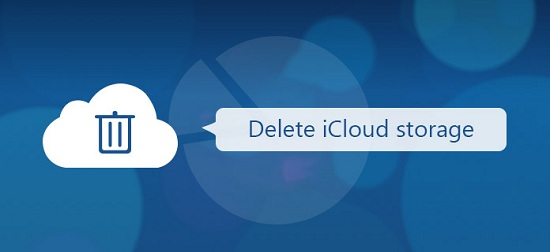Tips & Tricks to Free Up iCloud Storage
Is your iCloud account almost full? Do you want to free up some space on your iCloud account? Well, Apple provides 5GB of total storage to every iCloud users, which looks like more for every iCloud users till users consider it’s per account, not per Apple device. However, it’s not that a lot of space to share between an iPhone, an iPad, or a Mac, and it is even much bad if any users share their account with any of their family members, relatives, or friends. Regardless of how many Apple devices any users have worried about the storage limitations always a matter of concern for every Apple device users across the globe.

Furthermore, Apple would resemble you to buy some extra storage, which always the best option. Generally, users subscribe to one of the best and more significant plans because of 5 GB, which isn’t sufficient for users. But before any user goes from 5GB storage to a paid-for-plan, or a paid for plan to more expensive option, though, it is worth knowing that if one can decrease the amount of storage space which users require. However, it doesn’t free up your iCloud storage or possibly saves your money. It can simply clean iOS devices or Mac too, by making those things which you care regarding a more easy way to find. Here are some simple tips to free-up your iCloud storage if it is almost full.
Don’t Try to Take Too Much Back Up
Did you know iCloud’s automatic backup can get much more space on your Apple device? Though, here we described two types of backups which every user can take for free up their iCloud storage which are as follows:
- System backups.
- Individual app backups.
System backup for Mac Devices
- Navigate to the “System Preferences” option.
- Choose the “iCloud” option.
- After that, press the “Little Manage” icon located in the below right side corner of the screen.
- Next, choose and click on the “Backups” option.
- Finally, a menu list of device backups appears on the screen, now from it select those option which you want to delete or not needed.
System Backups for iOS Devices
- Firstly, go to the “Settings” icon to open the settings menu on the screen.
- Choose “Username” from the list.
- Then, click on the “iCloud” option and navigating to the “Storage’ bit.
Note: Specifies differ from models to models and their versions, for instances, you are using iOS 11 version, you have to choose “Manage Storage” and then select “Backups” and if you are using iOS 10 then go to “iCloud Storage” option then select “Manage Storage” option. Finally, one can choose their device and easily delete its backups. However, one can also prevent that device from backing up simultaneously.
Individual App Backups
Although the steps are almost the same as for backups, this option is only applicable for iOS users only. For this, navigate to the “Storage” and “iCloud Settings,” a list of the application appears on the screen and using iCloud. Moreover, user can disable their iCloud with the buttons in which grey indicates iCloud is off and green indicates iCloud is on.
Manage the Mail App
Did you use your iCloud for accessing your email account or messages? Do you know messages could be taking up so much space of your iCloud storage? Are you troubling from file attachment issue? Then, it is one of the handiest ways to troubleshoot most of these issues on the system: in Mail.app, which looks in the suitable files and folders. However, the sent mail folder is really an excellent way to begin the process with, so follow some simple steps which are as follows:
- Navigate to the “View” tab.
- Click on the “Sort By” option.
- After that, tap on the “Attachments” tab.
- Now, from the list of attachments, choose individual messages and delete those who have some big attachments. Or one can take a parched-earth approach and zap with each email with any attachments.
If in case, users are feeling organized, Then one can use Mail’s search bar option to locate the messages from or to the precise user. Again, one can delete the ones which users don’t want to keep it.
Ellen Cooper is a technology enthusiast who loves writing about new advancements and IT threats on a regular basis. Her work focuses on the latest advancements in the realm of technology, social media, and cyber security at norton.com/setup.
Comments
Post a Comment